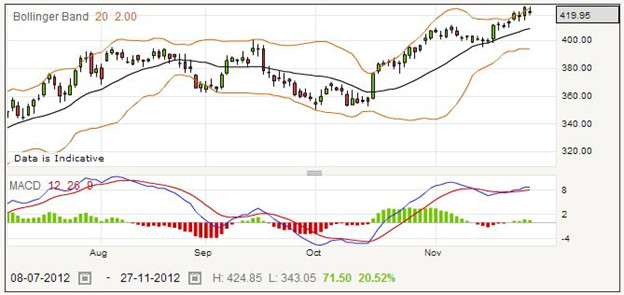Inchcape can trace its history back many years, in fact to the mid-19th century. Its operations now, which are very different from its original purposes, are what is interesting for spread betting. The chart shows a lively price, with several good opportunities for profit.

This looks particularly good for trading, because there are few areas of sideways price movement, and most of the time the price going either up or down.
When the company started it was called Mackinnon Mackenzie Company, and it was a merchant partnership based in India. It captured several contracts, including mail delivery and transporting British troops between Ceylon and India. In 1862 it was floated on the stock market for the first time under the name British India Steam Navigation Company.
James MacKay joined the company in 1874, and by 1914 was the senior partner. Having dealt with India’s currency problems, he was given a peerage in 1911, and in 1929 became the first Earl of Inchcape. By the 1950s the third Lord Inchcape formed Inchcape and Company to consolidate the family’s international interests. Inchcape and Company went public in 1958.
All this time, the company concentrated on shipping and trading around the world. A major change occurred when one of the acquisitions was Mann Egerton & Company, a long-established car sales company, in 1973. Inchcape reincorporated as Inchcape PLC in 1981, and kept growing through acquisitions of various types, but by the end of the 1980s the motor division of Inchcape accounted for more than half of the profit and turnover.
In the mid-90s, Inchcape went through difficult times and divested itself of conflicting interests, concentrating on worldwide car distribution, as its most profitable division. Now it is simply a multinational automotive retail and services company, with operations in 26 countries around the world.
Inchcape Rolling Daily: How to Spread Bet on Inchcape Shares?
The current spread betting quote for a rolling daily bet on Inchcape is 418.95 – 421.05. The company is generally on an uptrend, even though it is far short of its high price of over 1000 in May 2007, just before the global economic crash. If you’re bullish about its prospects, you could place a buy bet at 421.05, staking perhaps £15 per point.
Say the price continues to go up, and you are able to close your trade and collect your profits when the quote is 487.60 – 489.70. The bet would close at 487.60, so your gain is 487.60 minus 421.05 points. This works out to 66.55 points, which at £15 per point represents a profit of £998.25. As this is a daily rolling bet, your account may have been subject to some adjustment each evening when the bet was rolled over, but usually this is not a significant amount.
If the price went down instead of up, you would be faced with closing your bet for a loss. Perhaps you would close your bet when the price fell to 368.15 – 370.25. With a starting price of 421.05 and a closing price of 368.15, you would have lost 52.90 points. For your chosen size of stake, that would cost you £793.50.
If you do not have time to watch the markets, then you might choose to place a stop loss order when you take out your bet. This would require your spread betting provider to close a losing trade for you when the price reached a level that you set, whether or not you were following the price. Say you used a stop loss order on this bet, you might find that the trade would be closed when the price dropped to 391.50 – 393.60. This time your loss would be 421.05 minus 391.50, which is 29.55 points. Multiplying that out, you would have lost £443.25.
Inchcape Quarterly Futures Spread Bet Style Bet
If you want to take a medium-term view on Inchcape shares, you may be interested in a futures style bet, where you can hold the trade open for several months without any further charge to your account. The current price for a far quarter bet on Inchcape is 419.78 – 424.85. The larger spread than for a daily rolling bet is the price for not having any rollover adjustments made to your account. If you are bullish about Inchcape, you could stake £8 per point at the buying price of 424.85, taking out a long bet.
Suppose the price goes up as you had hoped, you might find that you are able to close the trade and access your winnings when the price is quoted as 463.97 – 468.92. Here is how you work out your profit: –
- Your bet opened at 424.85
- Your bet closed at 463.97
- Therefore you gained 463.97 minus 424.85 points
- This is a total of 39.12 points
- Your stake was £8 per point
- Therefore you have gained £312.96
If on the other hand the price went down, you may choose to close the trade and accept your loss before it becomes any greater. Say you closed your bet when the price was quoted at 393.72 – 398.75.
- Your bet opened at 424.85
- Your bet closed at 393.72
- Therefore you lost 424.85 minus 393.72 points
- This is a total of 31.13 points
- Your stake was £8 per point
- Therefore you have lost £249.04
If you chose to use a stop loss order, you might find that the bet would be closed earlier and you would lose less. Perhaps it would close when the quote was 401.36 – 406.40. This time: –
- Your bet opened at 424.85
- Your bet closed at 401.36
- Therefore you lost 424.85 minus 401.36 points
- This is a total of 23.49 points
- Your stake was £8 per point
- Therefore you have lost £187.92